Hemileuca nuttalli
Immatures
Home Butterflies and Moths Details Adults Male Emerging
Ova on 14 August 2013
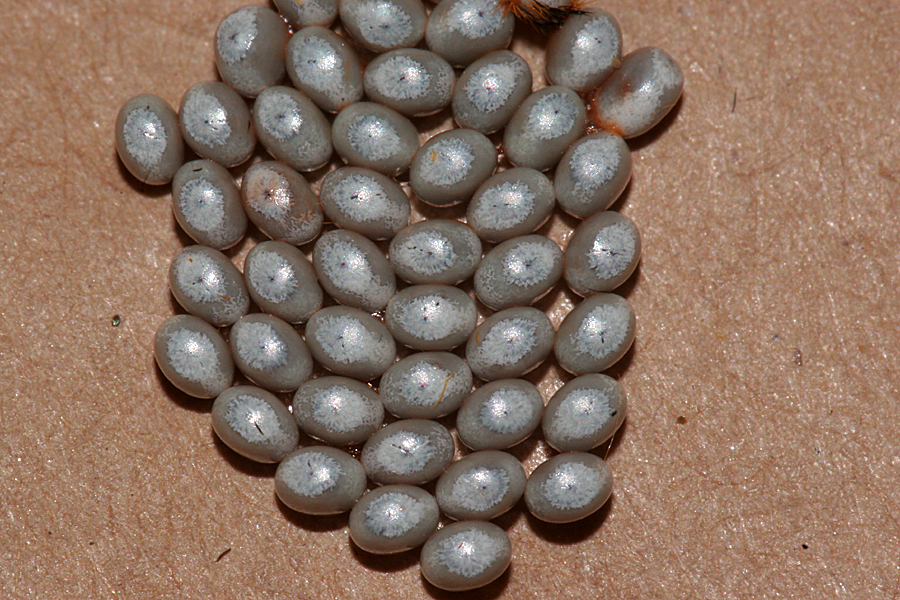
Larvae were taken out of hibernation 19 April 2014
After hibernation the ova took one to two days to emerge
since they developed before hibernation.
The larvae that hatched 21 April 2014 marched around and
around the paper holding the empty ova.
I diverted them with a small brush then they went to the
leaf and marched around and around for about a half
hour then some walked down the plant stems. They didn't
start feeding until the next day.
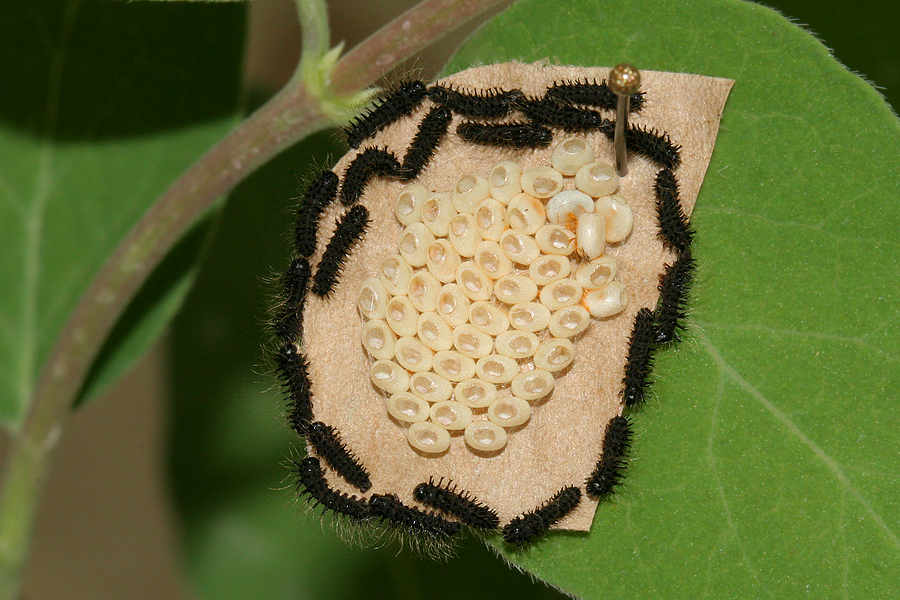
Exuvia - 26 April 2014
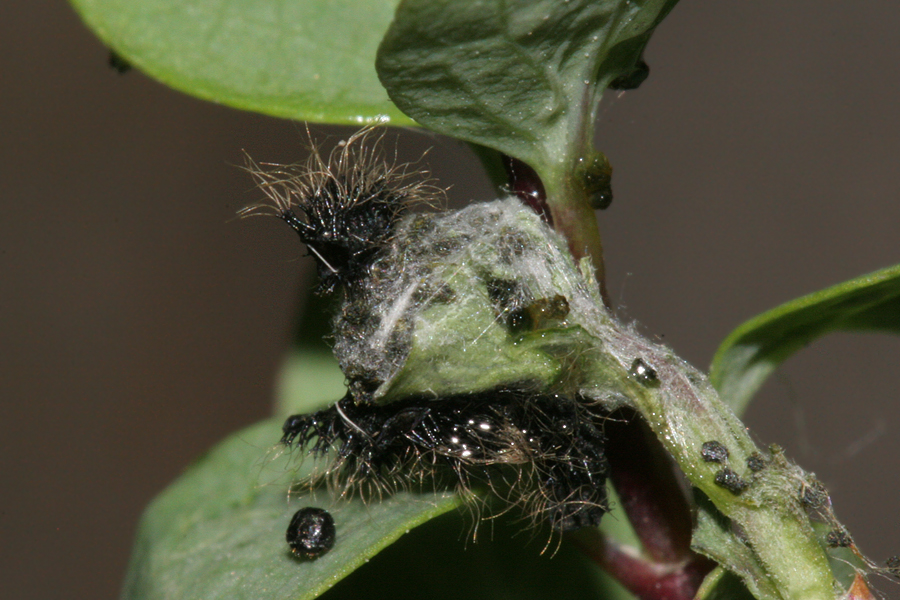
Second Instars an hour after molting 26 April 2014
which was 6 days after emerging from ova.
Larvae were now about 7 mm.
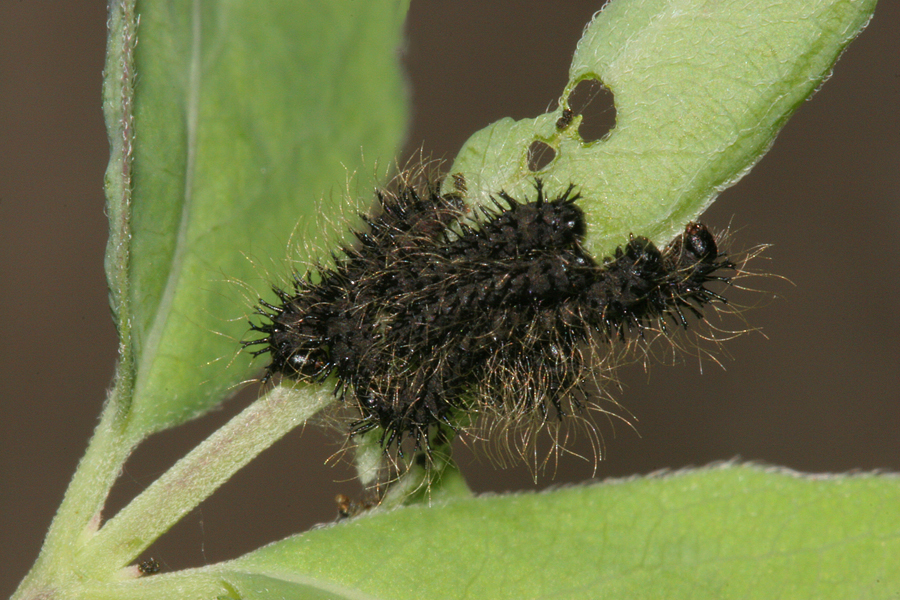
Second Instar immediately after molt
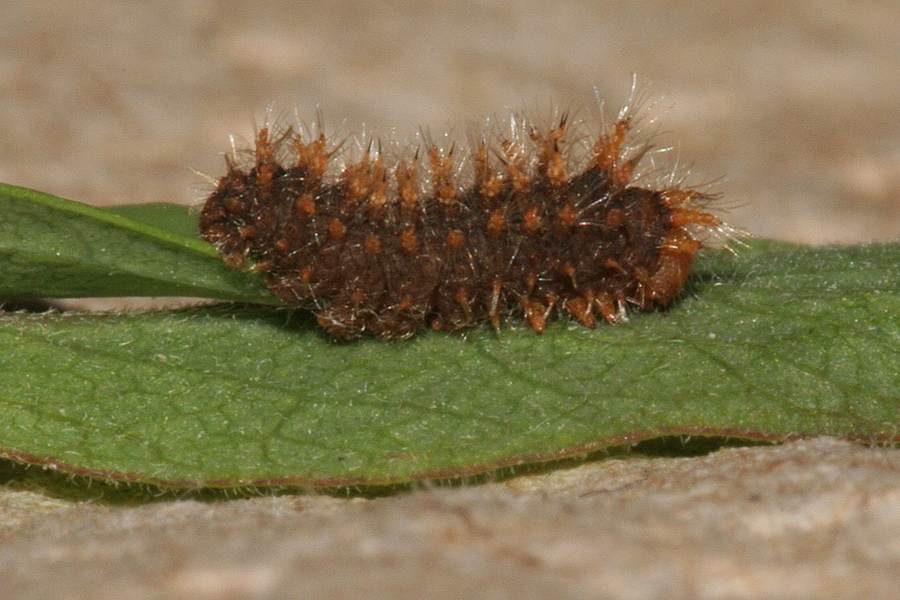
Just molted to Third Instar - 30 April 2014
The dark larva at the bottom is set to molt to Third Instar
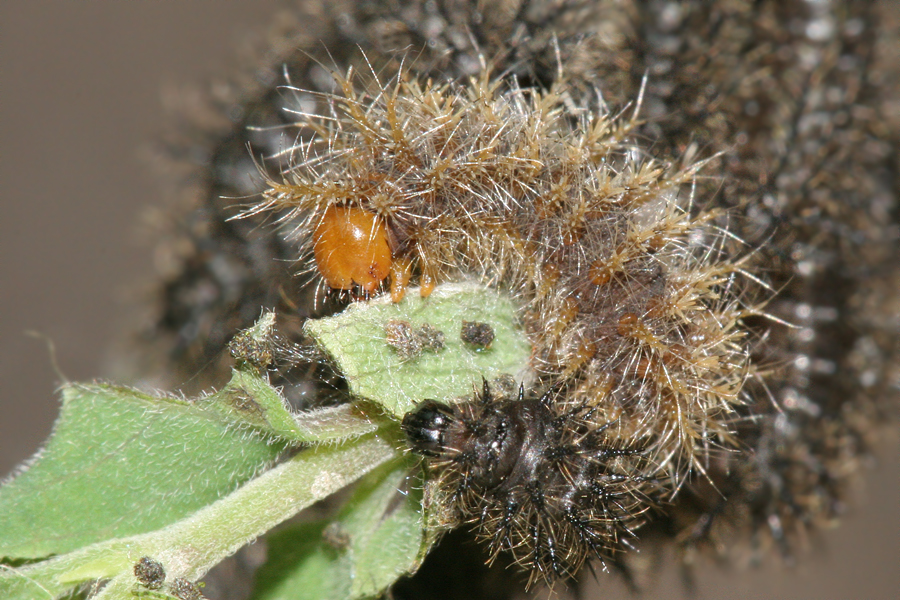
Molted to Fourth Instar 5 May 2014
Photo on 7 May 2014
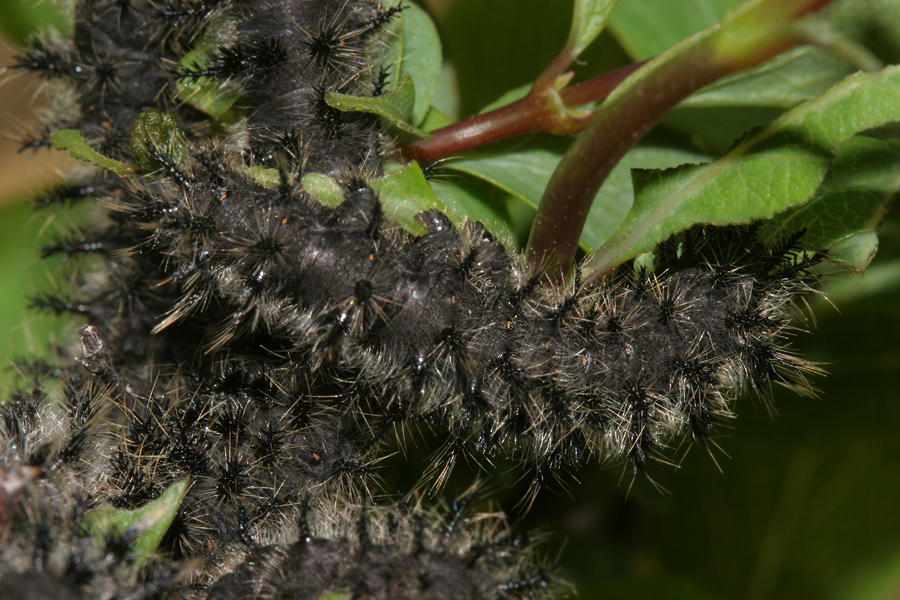
Molted to Fifth Instar May 11, 2014
Photo of 6th day Fifth Instar May 17, 2014 - 53 mm. long
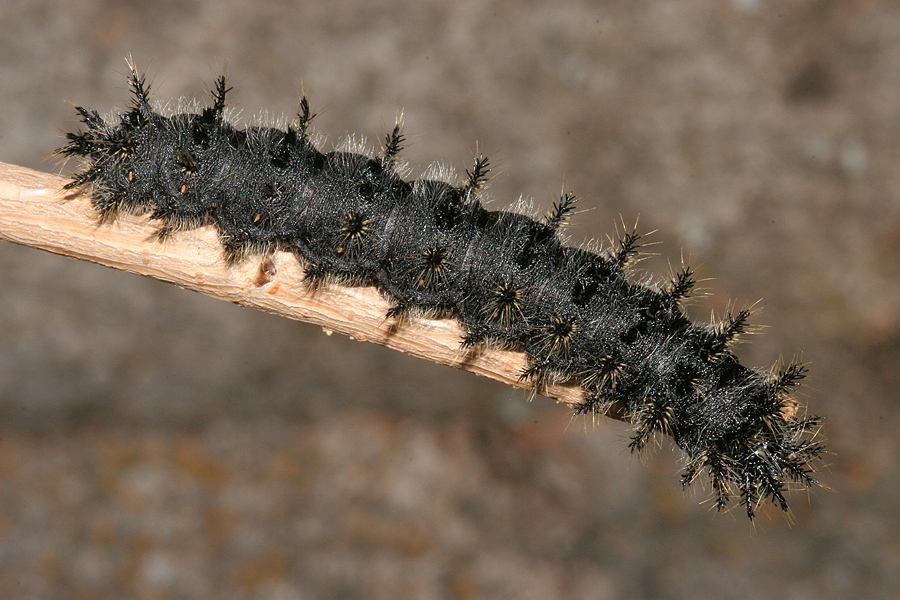
Photo of 6th day Fifth Instar May 17, 2014 - 53 mm. long
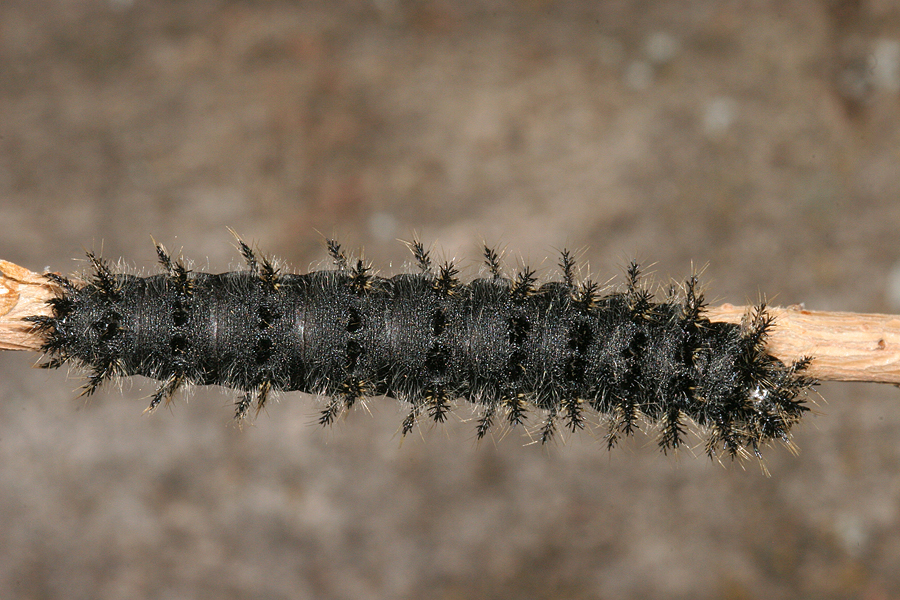
May 30, 2014, Wild larva feeding on Snowberry Bush
at the location where the adults were photographed in 2013
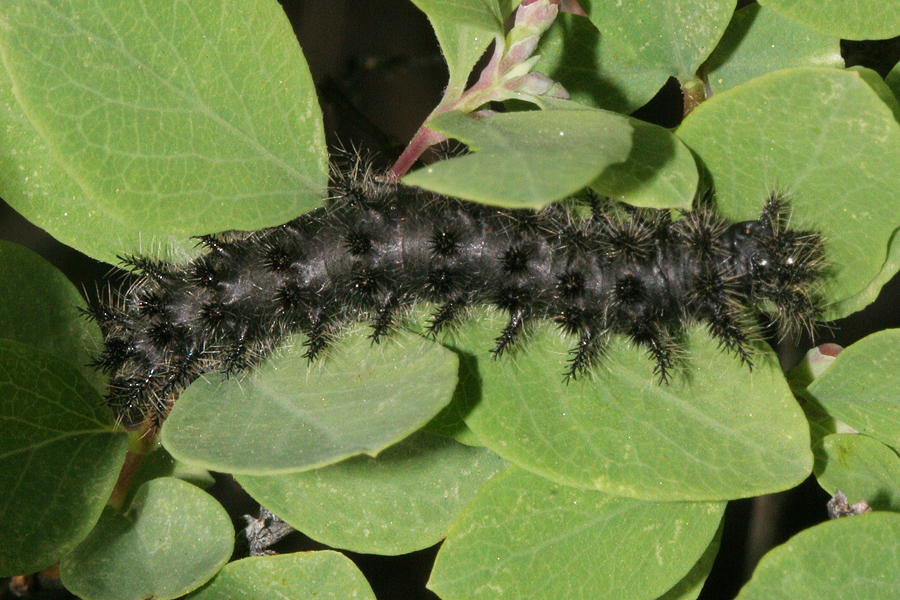
#1 Pupa formed 30 May 2014 in hole it made
for pupating in peat moss
Notice another pupa underneath it.
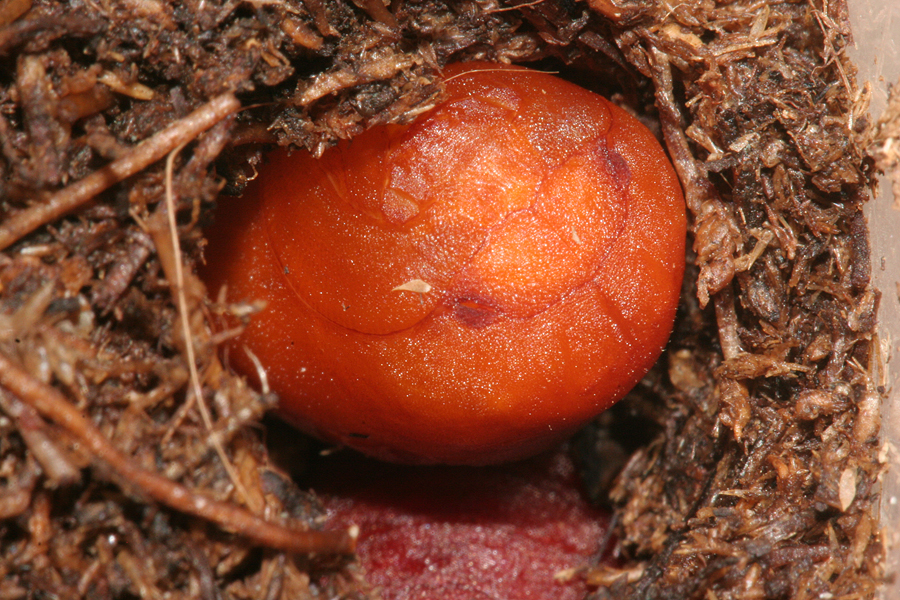
#1 Pupa - May 31, 2014
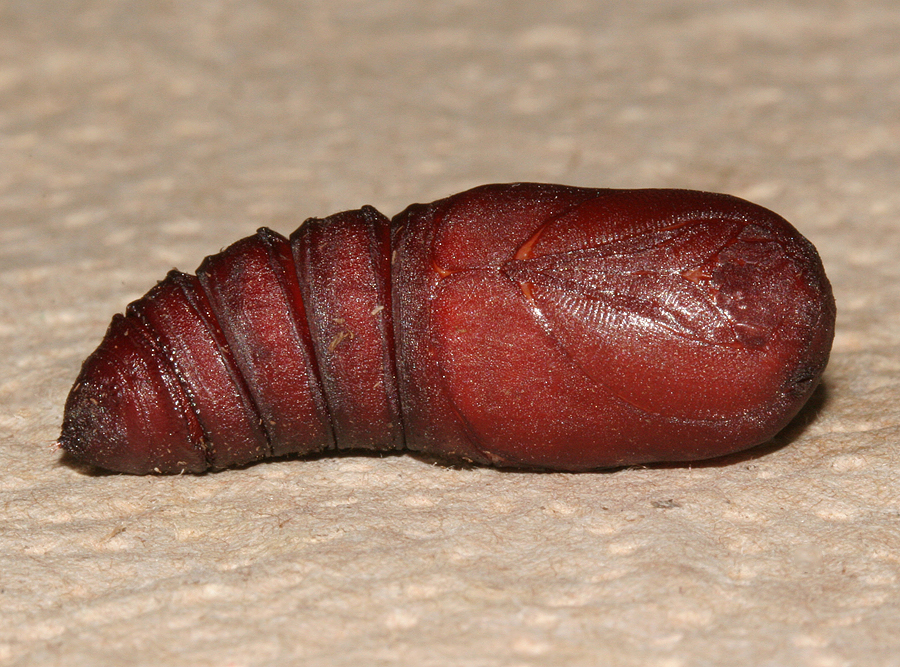
#1 pupa - May 31, 2014
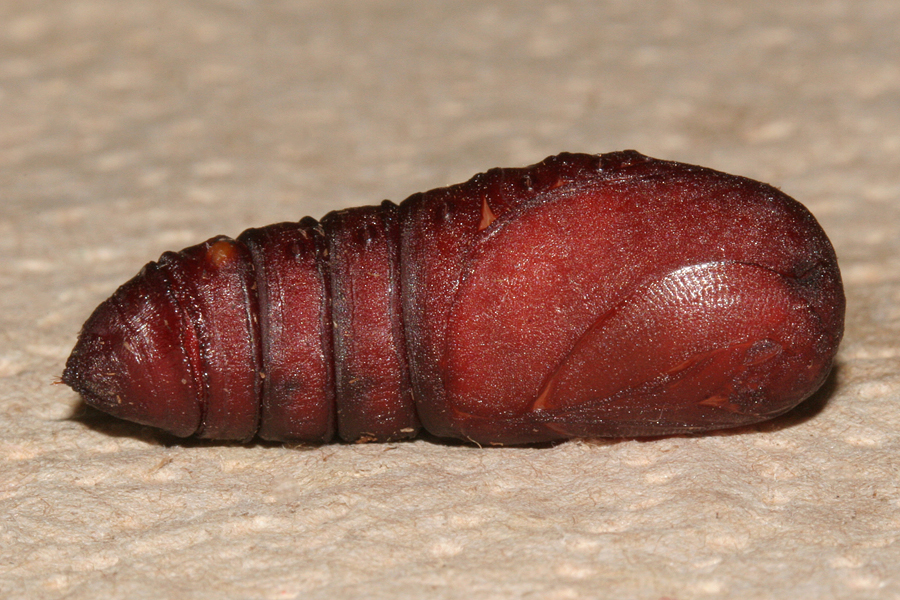
#1 pupa - May 31, 2014
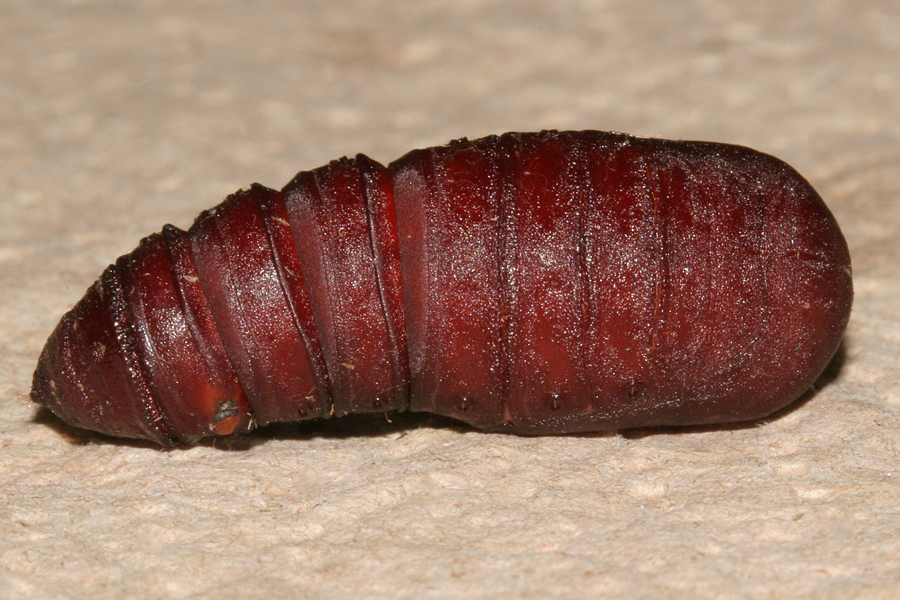
Discarded Head Cases from molting to second through fourth instar
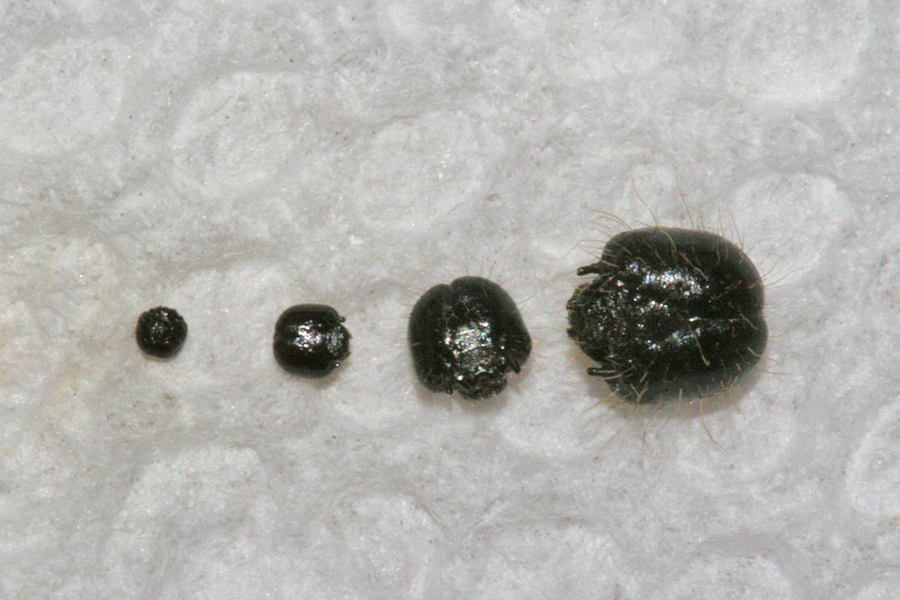
June 21, 2014 photo of caterpillar burrowing into the sand
by the road where we located the adults last year
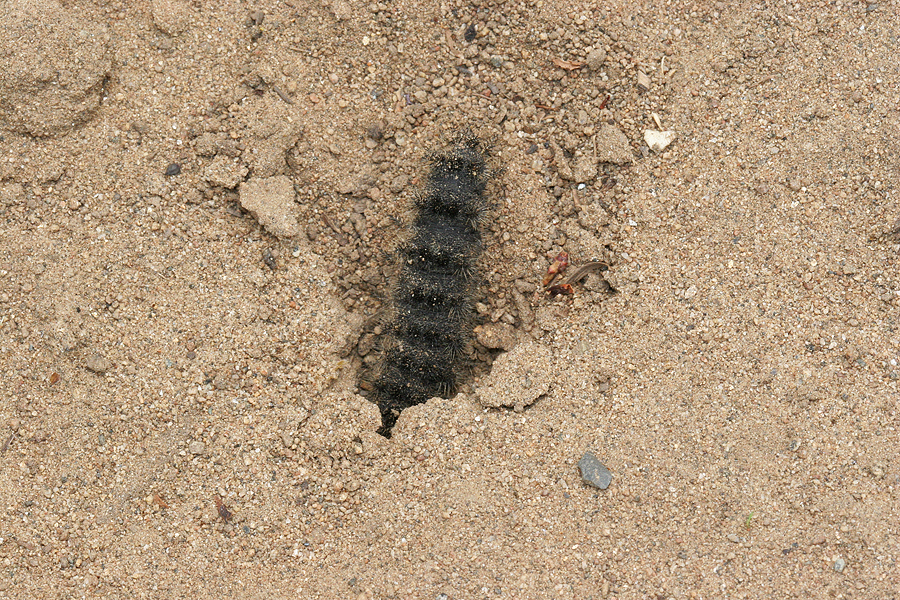
| Photo Details ŠNicky Davis On 14 August 2013 Les and Nicky Davis located female and males at a meadow on the Guardsman Pass Road, Utah 7230 feet, 40.34.13 N, 111.29.57 W. The female was placed in a paper bag on 14 August 2013 where she oviposited 150 ova. Per Butterflies and Moths of North America, the ova overwinter, larvae emerge in the spring then hibernate again as pupae. Ova were placed in a container and misted every third day and kept in room temperature of about 78 degrees. The light was shut off at about 9 P.M. each day which still gave the ova light for about 14 hours. One of the ova emerged 28 September 2013 so 14 hours of daylight with warm temperatures of 78 degrees was too much to keep them from emerging the same year. On the same day, the rest of the ova were placed in the fridge at around 40 degrees to try to stop them from emerging since the host plant will not be available for long this fall. They will be put in lower temperatures soon. Ova - were taken out of hibernation 19 April 2014. They emerged on 20 and 21 April 2014 Molted to second instar 26th and 27th of April 2014 Molted to third instar 30 April - 2nd of May 2014 - 13 mm. long as first day third instar. Molted to fourth instar May 5 and 6th 2014 Molted to fifth instar May 11-13th 2014 Fifth Instars ate for 6-8 days then began wandering around and refused to feed. On the 22nd of May they were finally placed in containers filled with peat moss and some shredded paper towels on top. There was some spotting of liquid. They were misted with water once a day. I began to place the containers outside overnight to give them more natural temperatures. On May 24th three larvae expelled some red liquid on the paper towel then burrowed into the peat moss and stayed there until forming pupae on the 30th and 31st of May 2014. They had made a depression around the edge of the container from continuously walking around it. I thought none of the others had pupated but when I emptied the containers I found several more pupae in the peat moss. In going to this same spot during June we saw the caterpillars of the nuttalli on the Snowberry bushes there. On 21 June 2014 we saw caterpillars on the side of the sandy pull out road digging into the sand to pupate. Pupae were taken out of diapause (hibernation) June 1, 2015 and a male eclosed July 11, 2015 Larvae - Time spent as First Instar - 6 days - Four day old first instars were 5 mm. long Second Instar - 5 days - 7 mm. long Third Instar - 5 days - Fourth Instar - 6-7 days Fifth Instar - 53 mm- ate for 6-8 days then began wandering around and refused to feed. Pupae - 27-31 mm long formed beginning May 30, 2014 Over-wintered as pupa Host Plant
 |